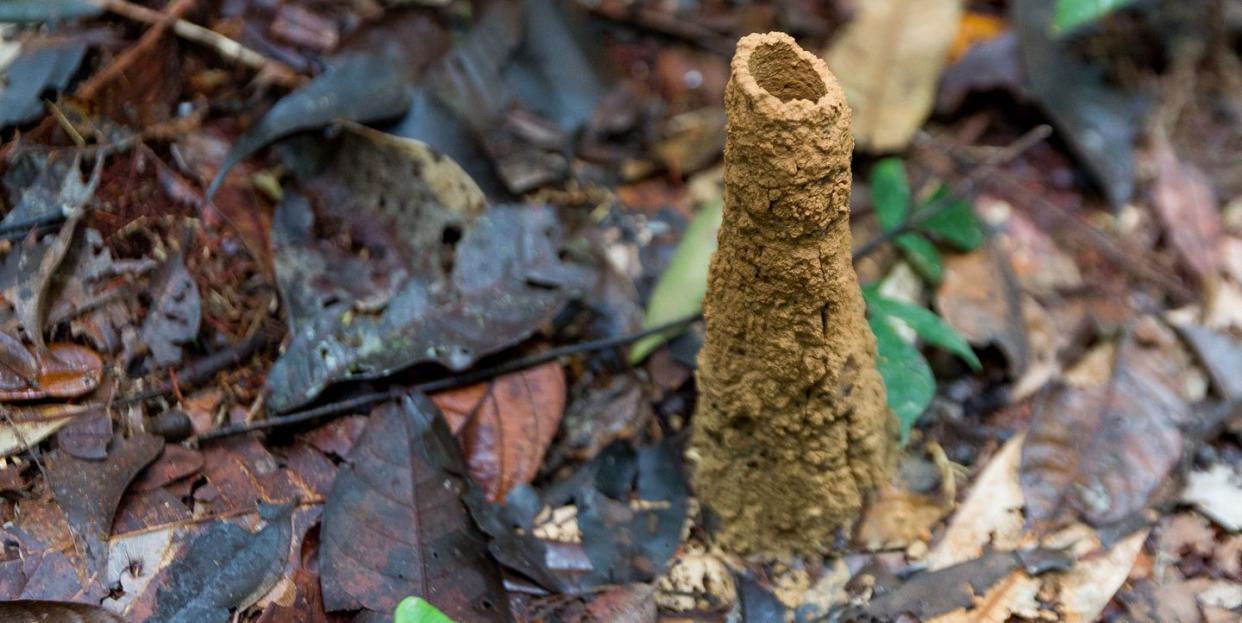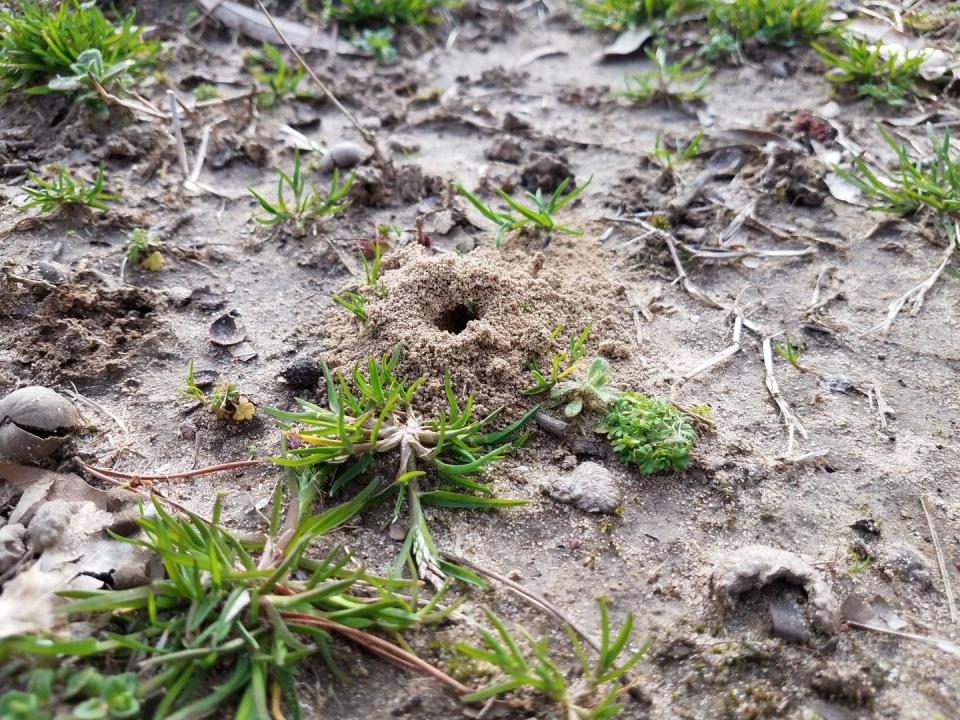You Might Spot a ‘Cicada Chimney’ Before the Bugs Come Out in a Swarm This Summer

With the impending arrival of Brood X, up to 1.5 million periodic cicadas will emerge per acre in parts of the Eastern United States this summer, especially Maryland, Indiana, and Pennsylvania.
These bulbous-eyed bugs only make an appearance every 17 years, and that’s a big deal—because they’ll be making a lot of noise in order to attract a mate (you know, in addition to the annual cicadas that come out each year).
But if you’re in cicada territory and on the lookout, just know this: You may spot a cicada chimney before you see any actual bugs. Not familiar with the term? Here’s what you need to know, according to experts, plus what do to if you happen to spot one near you.
What is a cicada chimney, exactly?
Cicadas have three stages in their life cycle: eggs, nymphs, and adults. The nymphs are essentially kid versions of cicadas, and they live underground and suck liquid from plant roots, says Ben Hottel, Ph.D., technical services manager at Orkin. The nymphs will stay underground, sometimes for years, before they surface as adults.
Some cicada nymphs will make what’s called a cicada chimney or mud chimney over the hole where they plan to emerge a few weeks before they actually surface. “It’s just an exit structure out of the soil,” Hottel says. “If the soil is wet, the nymphs will create these structures to help give them a pathway out.”
The chimneys usually start to show up as temperatures get warmer, says Howard Russell, M.S., an entomologist at Michigan State University. And, he says, the unique chimney shape happens because the cicadas “get lazy.”
“They don’t spread the dirt out, they just put it up as they tunnel to the surface,” he says. “Since it’s wet, it just gobs together and forms a chimney shape.”
There’s another important reason for the shape, too. “The chimneys help keep mud or water from sliding into the holes, allowing cicadas to continue to breathe,” says Nancy Troyano, Ph.D., a board-certified entomologist and director of operations education and training for Ehrlich Pest Control. “In drier areas, the cicada will just make a hole at the surface.”

What do cicada chimneys look like?
Cicada chimneys typically look like little mounds above the earth, which can be two to three inches high and one to two inches wide with a hole that’s about a ½ inch wide in the center. They aren’t always the same size, though. “There can be some variability—it depends on the soil conditions,” Hottel says.
These mud holes look much different compared to, say, an ant hill. “Cicada chimneys have a lot larger openings than an ant hill, which has a tiny opening,” Hottel says.
There’s even a difference in material. “Cicada chimneys are made from mud, whereas ant hills are made from dirt and often in combination with twigs, pine needles, small pebbles, sand, or leaves,” Troyano says.
Can cicada chimneys harm people or pets?
Nope. They’re just mud structures, Hottel says. “They will not hurt you or your pets,” he adds. If they show up in your grass, though, you may have some yard holes to deal with.
What to do if you spot a cicada chimney
You have choices here. If you spot one or two around your home, Hottel recommends just letting them be. “Cicadas are not really harmful at all,” he says. “They don’t do damage to mature, healthy adult trees.”
If you find that your yard has turned into a minefield of cicada holes, it’s understandable that you might want to take action. “You could knock them down if you don’t care what could happen to the cicadas,” Hottel says. “If you have very wet soil conditions and they have trouble emerging, the weaker ones could have some mortality.”
Just remember: There’s a chance that it could kill the cicada inside—which has waited 17 years to come out. It’s also entirely possible that the cicada will just dig a new hole or has already made its exit. “There’s no guarantee that cicadas will be present,” Hottel says.
If you happen to see a few cicada chimneys here and there, he suggests just trying to deal with it for a few weeks. “This happens once every 17 years,” he says. “It’s temporary.”
Go here to join Prevention Premium (our best value, all-access plan), subscribe to the magazine, or get digital-only access.
You Might Also Like

